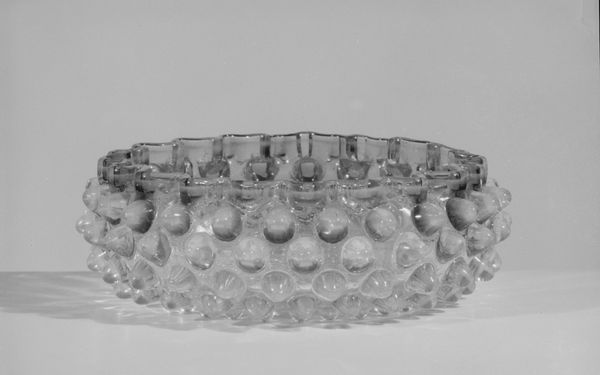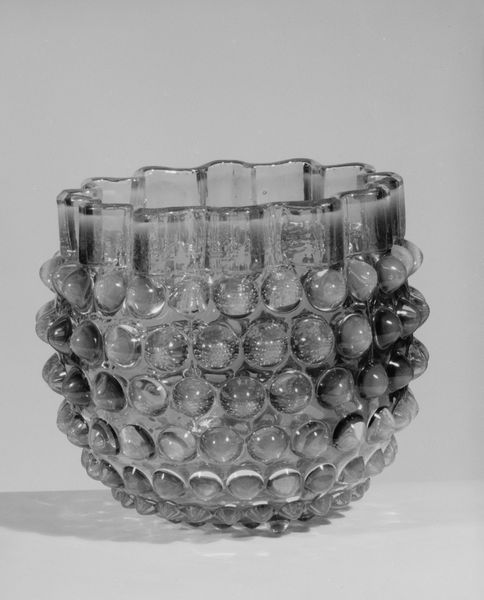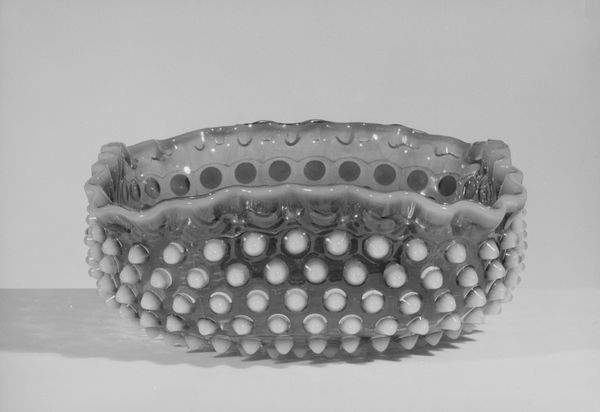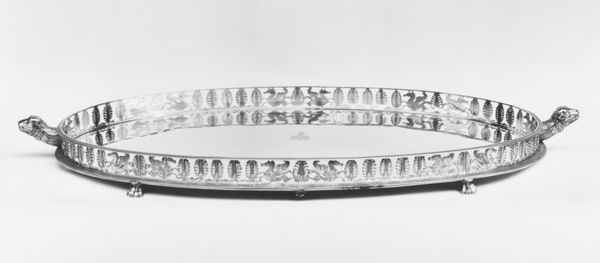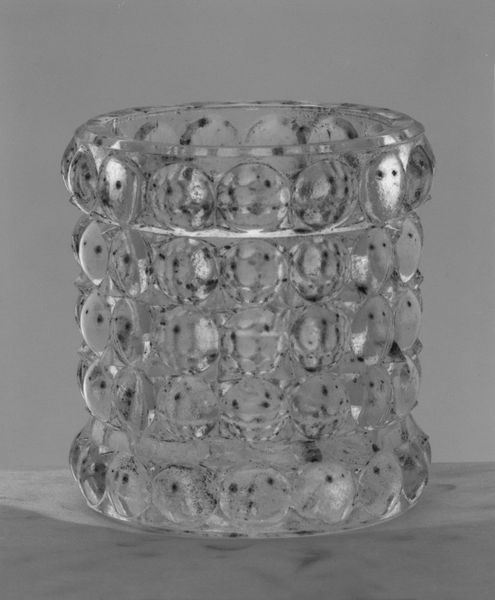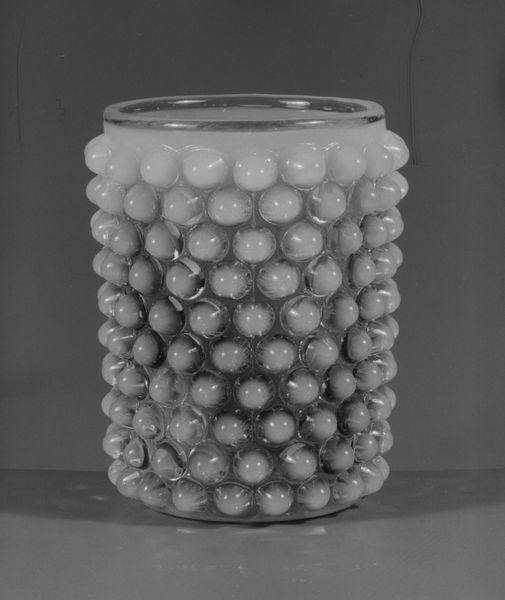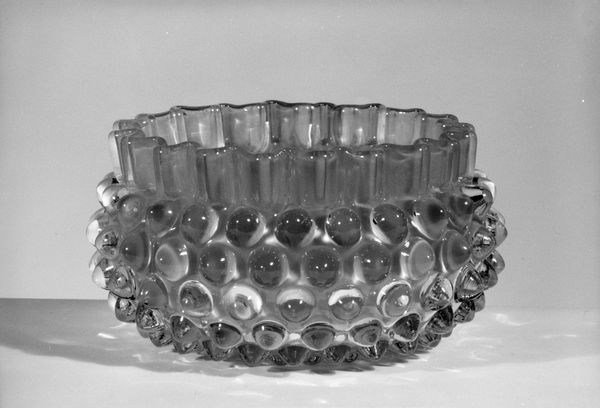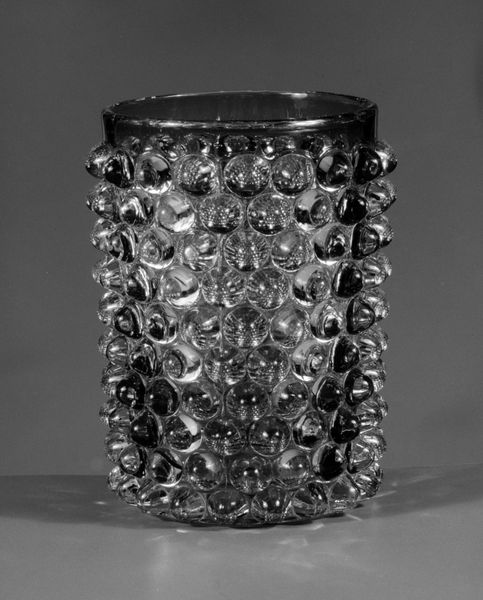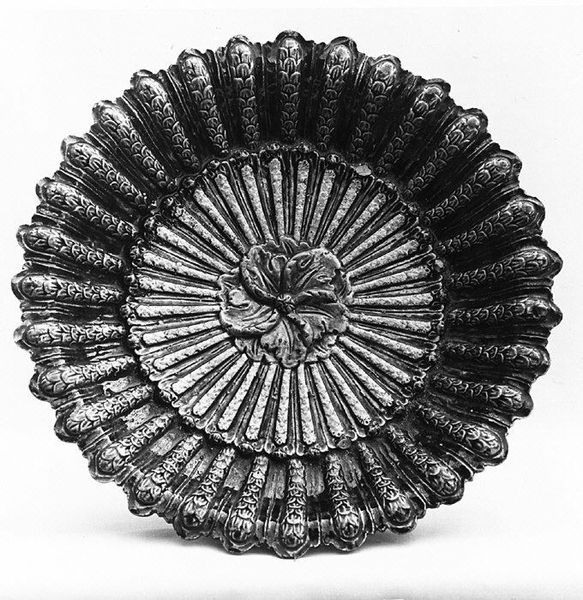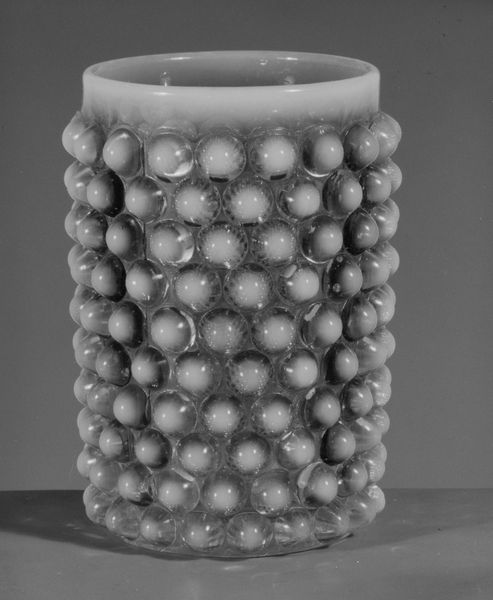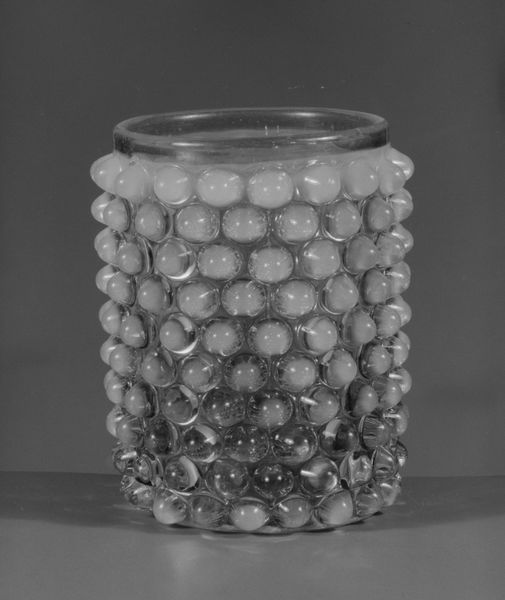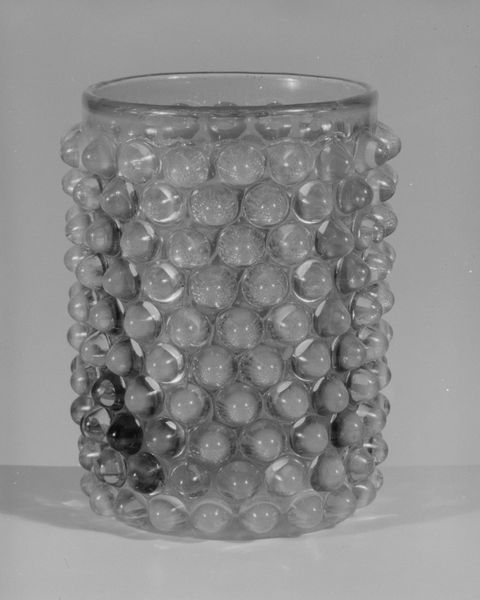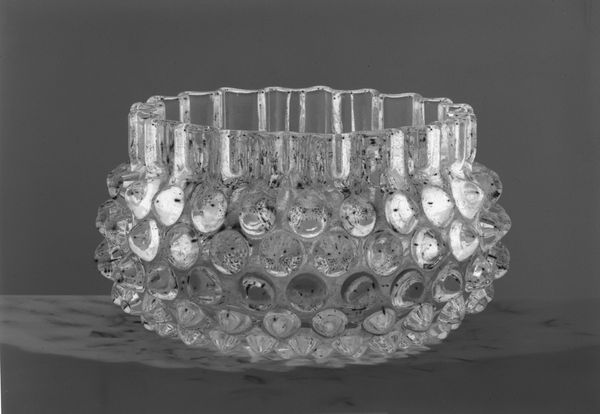
glass, sculpture
#
sculpture
#
glass
#
sculpture
#
decorative-art
Dimensions: H. 2 3/4 in. (7 cm); Diam. 5 in. (12.7 cm)
Copyright: Public Domain
This hobnail finger bowl was made by Hobbs, Brockunier, and Company, sometime between 1863 and 1891. Finger bowls were a common feature of middle- and upper-class dining tables in America during this period. Examining such an object helps us consider the social rituals around dining, hygiene, and display of wealth in the late 19th century. The hobnail pattern—those raised glass dots—was popular for its tactile quality and the way it caught the light, reflecting the Victorian era's love for ornamentation. Manufactured in America’s Ohio River Valley, it speaks to the rise of industrial glass production and its impact on domestic life. Companies like Hobbs, Brockunier, and Company mass-produced items like this, making them accessible to a growing consumer culture. Understanding the history of decorative arts like this requires us to look at trade catalogs, company records, and period etiquette guides to understand the social and economic contexts that gave rise to this object. It reminds us that even the most humble object can tell a rich story about its time.
Comments
No comments
Be the first to comment and join the conversation on the ultimate creative platform.
